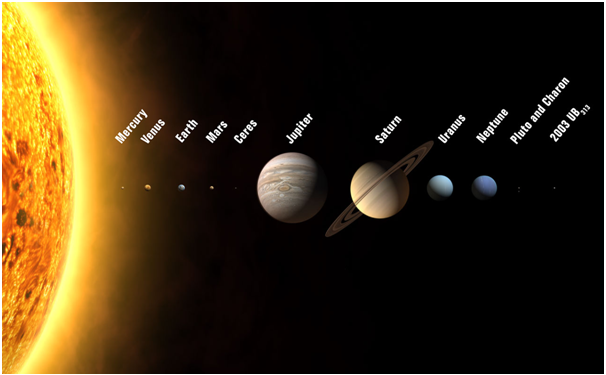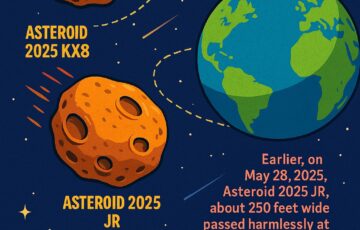PLUTO
Context: According to the International Astronomical Union (IAU), our solar system officially has eight planets: Mercury, Venus, Earth, Mars, Jupiter, Saturn, Uranus and Neptune. But between 1930 to 2006, it had nine. Pluto was long thought to be the ninth, smallest and outermost planet in our solar system but it has been relegated to the status of a dwarf planet.
The discovery of Pluto
- In 1906, Percival Lowell, a businessman, started an extensive project in search of a possible ninth planet, – Planet X.
- The existence of a ninth planet had been theorised by scientists in the late 19th century while observing perturbations in the orbit of Uranus.
- Astronomers had speculated that some planet, other than Neptune, was behind observed disturbances in Uranus’s orbit.
- By 1909, Lowell and his collaborator William H Pickering suggested several possible celestial coordinates for Planet X but were unable to prove its existence.
- The search for Pluto was paused for fourteen years post Lowell’s passing in 1915, resumed by a 23-year-old astronomer named Clyde W Tombaugh in 1929 at the Lowell Observatory.
- Tombaugh systematically imaged the night sky in pairs of photographs taken two weeks apart.
- Then, using a blink comparator, he rapidly shifted back and forth between views of each of the plates to create the illusion of movement of any objects that had changed position or appearance between photographs.
- After a year of searching, on February 18, 1930, Tombaugh discovered a possible moving object on his photographic plates.
- After confirmatory photographs were obtained, the news of the discovery was telegraphed to the Harvard Observatory.
The naming of Pluto
- The discovery of a new planet made headlines across the world with the Lowell Observatory receiving 1000s of letters suggesting possible names.
- After much deliberation, Pluto was chosen after the Roman God of the underworld.
- The name was suggested by Venetia Burney, a 11-year-old schoolgirl from Oxford, England who was fascinated with classical mythology.
- The name deemed appropriate for presumably the darkest and coldest planet of the solar system, Venetia was given a reward of £5 for her efforts.
Controversy
- After the discovery doubts started being raised whether Pluto was indeed Lowell’s “Planet X”.
- Pluto was tiny compared to what was originally predicted, definitely not large enough to cause the observed disturbances in Uranus’s orbit.
- That along with the fact that it was more than six times dimmer than what Lowell had predicted, meant that ever since its discovery, scientists questioned Pluto’s status as a planet.
- Astronomer Armin O Leuschner wrote in April 1930 stated that Pluto’s dimness and high orbital eccentricity (how much it deviates from being a perfect circle) made it more similar to an asteroid or comet than a planet.
Losing planet status
- Pluto’s status as a planet fell into jeopardy 1992 onwards, when the Kuiper Belt was discovered.
- A circumstellar disc in the outer solar system, the Kuiper Belt contains over 100,000 discovered small objects (diameter over 100km), all revolving around the sun beyond the orbit of Neptune. As more KBOs were discovered, Pluto’s uniqueness as a celestial object quickly diminished.
- In 2005, astronomers at Caltech announced the discovery of a new trans-Neptunian object, Eris, which was substantially more massive than Pluto.
- While some clamoured for it to be called the tenth planet of the solar system, others saw it as the strongest argument for reclassification of Pluto.
- In 2006, the IAU came with a resolution that created an official definition of a “planet”. The resolution outlined three criteria that a planet must meet in order to be so classified:
- The object must be in orbit around the sun,
- The object must be big enough to be rounded by its own gravity, and
- The object must have cleared the neighbourhood around its orbit.
- Pluto failed to meet the third criterion. Pluto is not gravitationally dominant – its mass is substantially less than the combined mass of the other objects in its orbit
- For celestial objects that satisfy the first two criteria but not the third, the IAU came with the classification of “dwarf planet”.
| Practice Question
1. What are the criteria for a celestial body to become a planet? |





